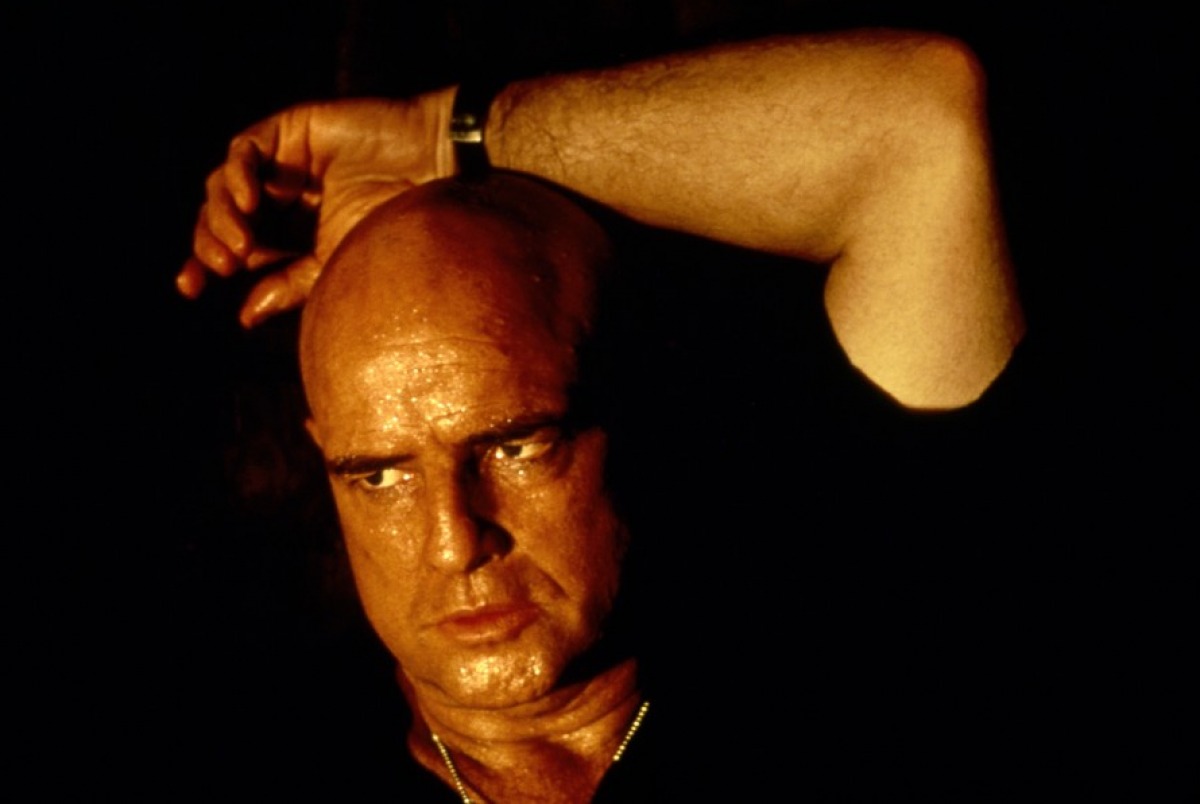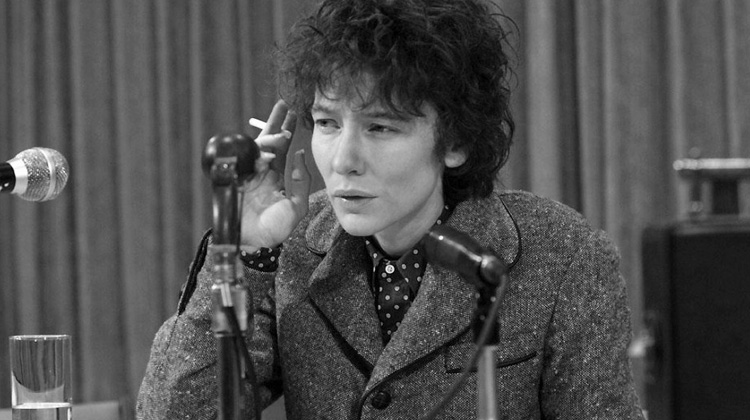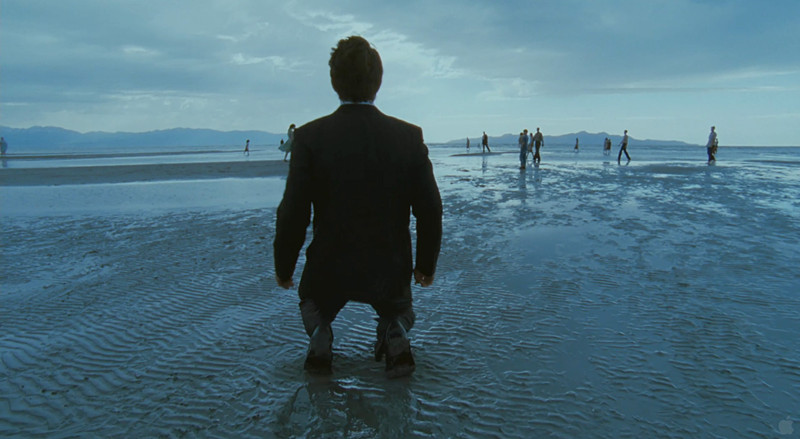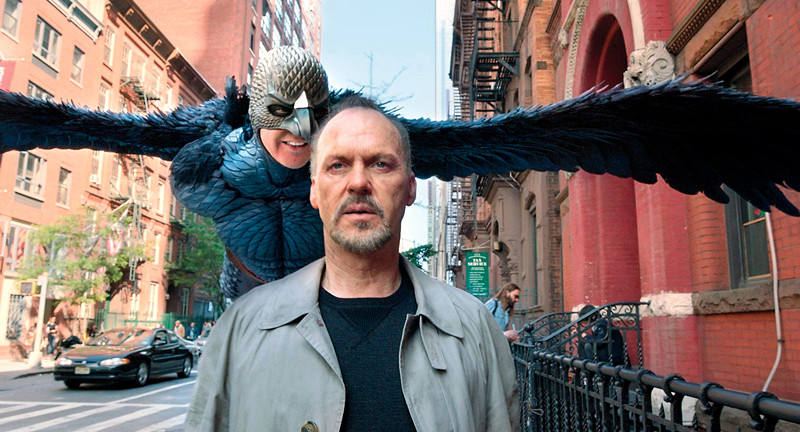6. Persona (1966, Ingmar Bergman)

It is doubtful that this film belongs in the list except it seems so tied to 8 ½ in form and approach that the connection is made if by no other way than through the zeitgeist of the times. Bergman was one of the most original and talented of Fellini’s contemporaries and there is always the possibility that if Persona had come first, it would be seen a new paradigm in film language – perhaps it is anyway.
The film begins with a projector starting up and then a series of cuts – clips? – from a variety of sources, comedy, documentary, drama and perhaps pornographic. Some of these seem to reference Bergman’s own work but the reference is not absolute only suggested. A nurse, Alma (Bibi Andersson), is assigned to take care of an aging and mute stage actress, Elisabet Vogler (Liv Ulmann).
There seems to be no reason for Elisabet’s silence and the medical staff can only hope that with steady care in a comfortable and familiar place, she might recover her voice. They are sent to a seaside cottage where it does seem that Elisabet is relaxing.
But there are moments when she breaks her silence in unpredictable and frightening ways (She laughs hysterically at Alma’s radio soap opera and becomes nearly uncontrollable when she sees a monk’s self immolation on television) Slowly Alma begins to be absorbed by Elisabet, to assume her personality, to become her.
As this narrative unfolds (it is difficult to call it a story), references to the medium of film itself begin to appear. The camera is seen to move in to the screen as if to take a shot of the audience as well as the actors – we can even see Bergman riding the crane as the camera moves in. At another moment the film burns and tears in the projector before resuming.
It is as if process and product have become one until at the end the cameras turns away from final scene of Alma leaving the cottage and reveals the crew at work watching this final shot. 8 ½ is the film Guido can’t make but we get to watch.
Persona breaks all barriers between camera an subject, subject and audience, film maker and film and in doing so suggests that even the self is a fabrication easily lost in other selves. Persona is not a celebration of life so much as it is an examination of life as cinema where the nature of life is not to be found in the circus but only in celluloid and then without meaning.
7. Apocalypse Now (1979, Francis Ford Coppola)

A retelling of Joseph Conrad’s Heart of Darkness, this film remains one of the best of its kind – although it is never clear whether its subject is war or the personal growth of one individual. Willard is sent up river to find Kurtz who has gone rogue and has his own native army somewhere deep in Vietnam. He follows orders and perhaps – like Kurtz – loses his soul. Or is it Kurtz who has found his soul and so must lose his life? Neither Conrad nor Coppola is clear. They may not even know.
Perhaps it is a cheap note to point out that 8 ½ and Apocalypse Now both use Wagner’s Ride of The Valkyrie – the former as the underscore to Guido’s first walk to the fountains in the spa and the latter as the deliberate “music of fright” Lt. Colonel Kilgore uses as his helicopters move in to attack a Vietnamese village. The similarity is pointed out because in each case the director has used the music to energize and comment on the sequence presented.
Perhaps it was the original cutting score for Fellini but for Coppola it is a piece of the elaborate score he develops from existing works of rock and contemporary to ground the film in its historic moment. When Kilgore has the tape switched on, the 19th century myths of heroes and maidens are brought to a moment of destruction so powerful and complete that it is god like itself.
Unlike 8 ½, Apocalypse Now is linear in structure and until the last reel always in the present. But as the events move to the final moments of Colonel Kurtz, the film begins to juxtapose actions that may or may not be of the same time or the same place. A buffalo is slaughtered in slow motion, Willard rises from the black waters, Kurtz seems to wait, to respond, to die and to live.
Other moments in Apocalypse Now! also seem to be lifted from 81/2 not the least of which is the arrival at the military post, illuminated as if for a circus with a stage on which a troup of Playboy Bunnies are dropped to perform an uncomfortably unerotic set of dances. No matter.
The audience of soldiers loses control and as these young women are airlifted to safety, Willard takes refuge in the darkness of his journey up river. In look and often in tone, Apocalypse Now is 8 ½ at war – a place where the creative can never be blocked but must always be engaged.
8. I’m Not There (2007, Todd Haynes)

“Inspired by False Stories” was the advertising slogan and we are told it is “inspired by the music and many lives of Bob Dylan.” So even before we enter the theater or turn on the DVD we are prepared for something that might or might not be fact based, might or might not be true, might or might not be fantasy. And this is certainly the case. We meet characters whose lives were foundational to Dylan, essential to Dylan or reflective of a song or moment of change.
Any synopsis of this film would take pages and would still not give justice to the forms – black and white, color, documentary and even film noir – that are used to give a screen reality to this evocation of the great twentieth century singing poet. It is a film that requires a knowledge of Dylan and of film as it evolves next to Dylan.
The sixties sequences are especially reminiscent of 8 ½ and the many performances, each with a different aspect of Dylan as a foundation, take us to that time when all of Guido’s life comes down the stairs near the end of 8 ½ – only now they may or may not be the same person.
9. Tree of Life (2011, Terrance Malick)

Before its release, the rumor was that Tree of Life would be to this new century what Kubrick’s 2001: A Space Odyssey had been to the sixties: a film that would separate generations and be better understood by the younger than it would by the older.
That prediction has not proven to be true nor has the persistence of Malick’s amazing film been as strong. But there is so much in this evocation of the human condition, its recreation of life in the early 1950’s and its Fellini inspired juxtapositions of memories and hopes, loves and losses that its place in a list of films of significance is certainly assured.
A businessman is tormented by the death of his brother when they were children; a wife/mother must deal with this loss and with her love for and fear of a husband/father who has been damaged by war and the ways in which simple living can corrode the spirit yet still finds meaning and pleasure in great works of music.
We start in the cosmos and are taken into earth’s prehistory to witness the unlikely event where a dinosaur shows sympathy for another of its kind and does not kill it. Children play in tree lined streets while parents look on or do not see the moments of bullying g or near violence that take place daily.
The scenes look peaceful but are full tension and cruelty. Are these the businessman’s memories? Are they true? Does it matter? Near the end he rides an elevator to a dizzying height and the finds himself on a beach where, as in 8 ½ everyone appears and forgives and finds the peace they could not find in life. Malick’s use of music is unparalleled.
From Brahms to Berlioz to Beethoven and on, the film is scored as if it were a Requiem for a time and those who lived it. Here again there is no creative block but there is the discovery through wish and through memory that life creates a narrative of its own and we are best served when we play our parts as we are called to.
10. Birdman (2014, Alejandro G. Inarritu)

Subtitled “The Unexpected Virtue of Ignorance,” Birdman tells the story of an actor Riggan Thompson (Michael Keaton) who years ago was made famous in a blockbuster comic book feature with the same name as the film we are watching. Since then, his career has been stagnant and since then, he has never been able to be taken seriously or to regain his popularity.
It is as if he has lived and died but must go on. The frame is his own production of his own play, an adaptation of a Raymond Carver Story, “What We Talk About When We Talk About Love.” Riggan has come to this point when his life is already in crisis: his daughter needs him, there is a pending lawsuit and a lead actor leaves the production the day before the first preview.
Moments of the play are made part of the storyline and while the décor tells us when we are on stage or off, the intersections seem to make dramatic sense in the way that Guido’s fantasies do with life itself. A New York critic appears a few times to add to Riggan’s worries. She wants to destroy this play without ever seeing it and finally as if the living were not enough, Riggan too often finds himself in conversation with the Birdman who flies in, floats about and challenges all that Riggan might have thought he was, is or could become.
The intrusion of this “fantasy/memory/created phantom” makes for comedic and tragic moments as well as disorientation. The Fellini like quality of his costume and his challenges bring 8 ½ to the stage in a way that is quite different from that attempted by Fosse or Spacey. This creature of Riggan’s mind is independent of his will, can not be called on to bring things together.
This is the unexpected virtue of ignorance. Riggan cannot go inside, cannot examine his life, can never resolve it. Like the film which seems to have been shot in one continuous take, Riggan can only keep moving, unaware of where he has been or where he is going but for the continued companionship of his the Birdman.
Author Bio: Joe Gillis is the pseudonym of an ancient and retired documentary television film producer – with a couple of narrative pieces to his credit and a few prestigious awards. He also has taught production and screenwriting at several colleges and universities.